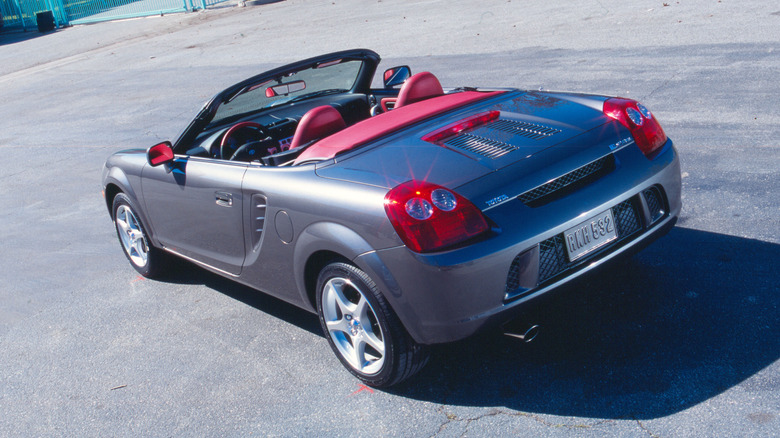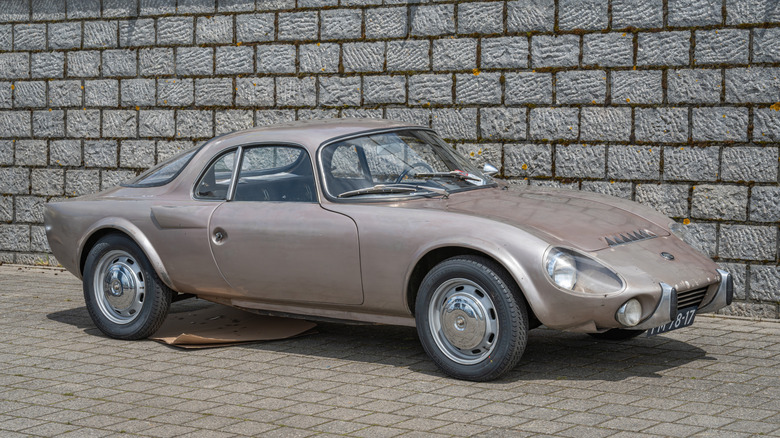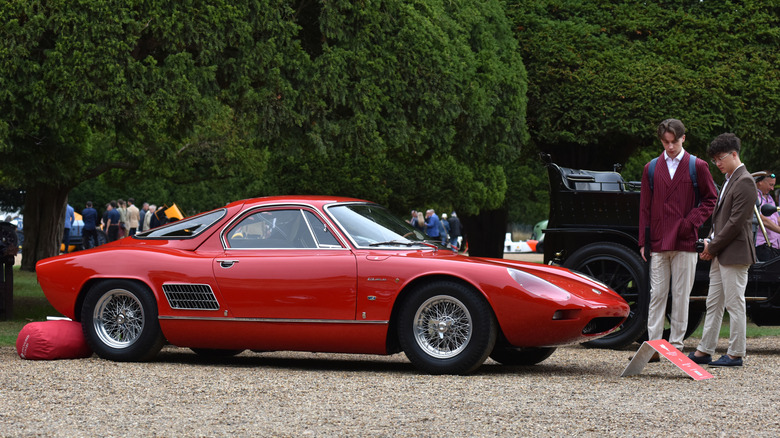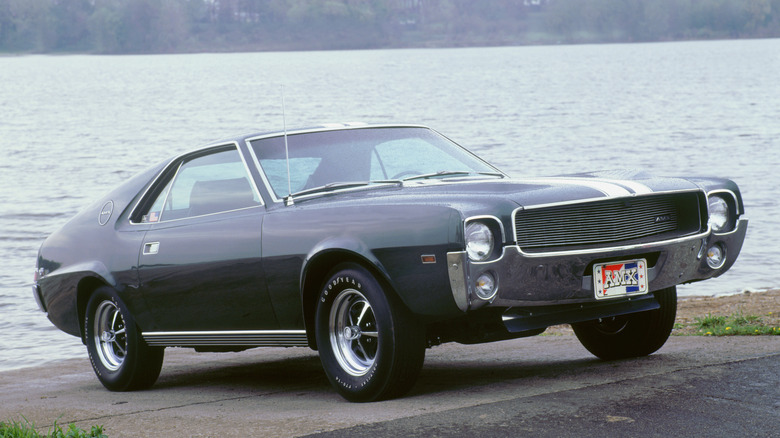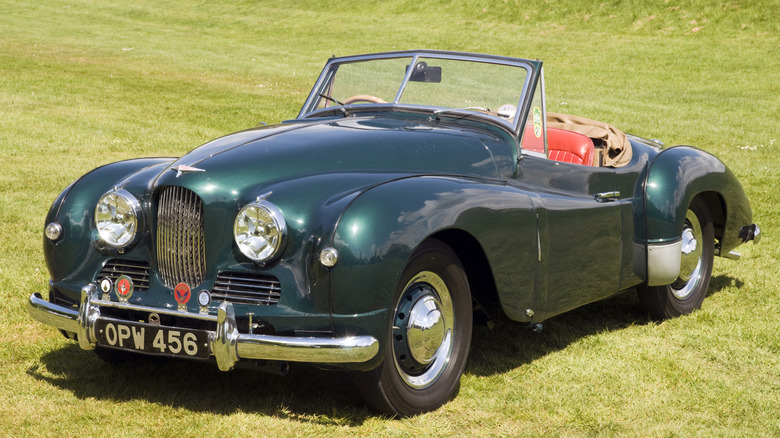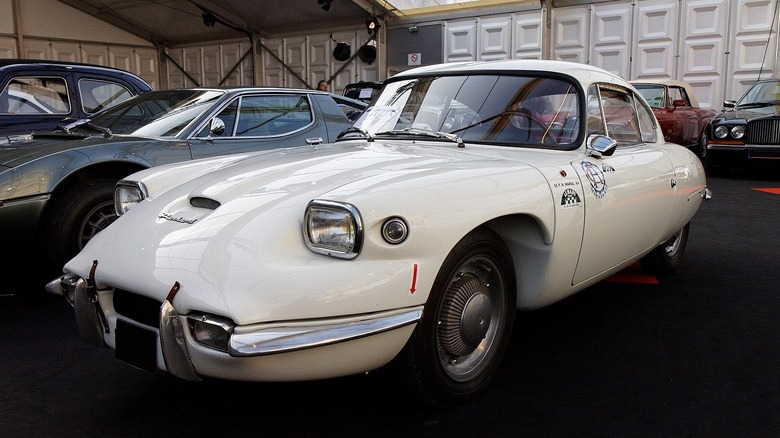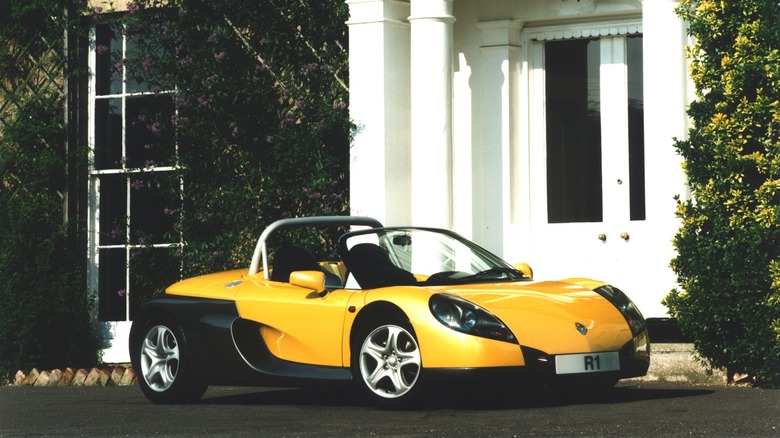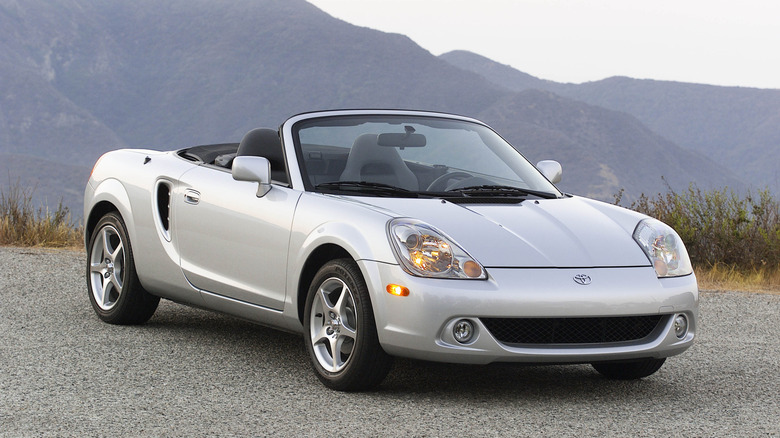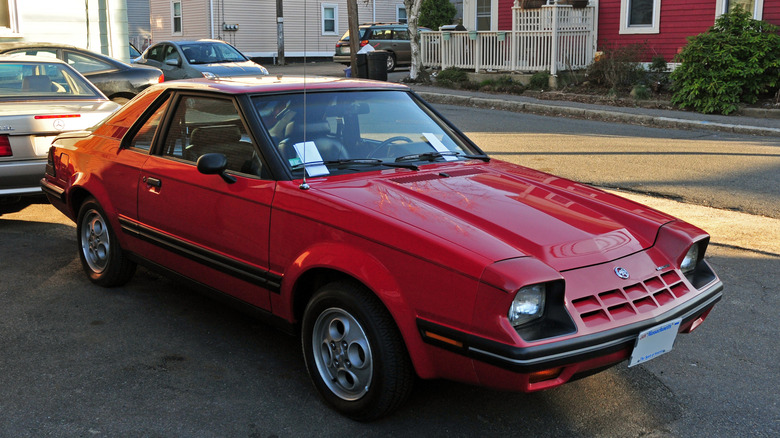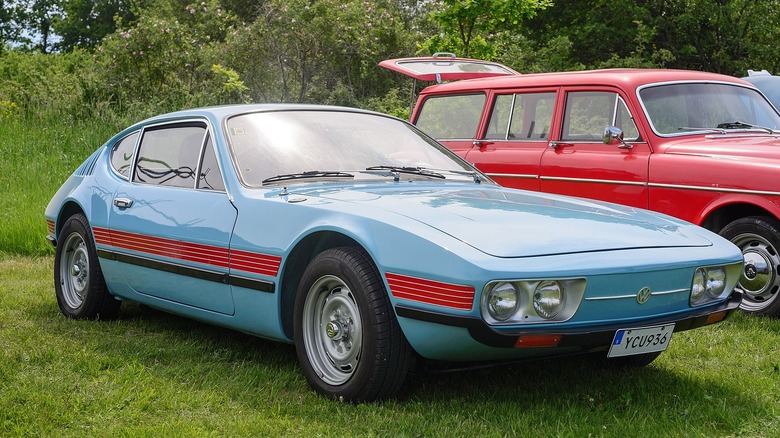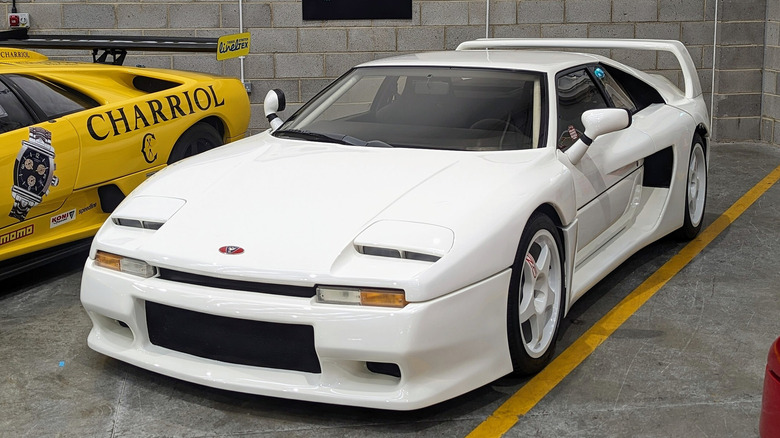10 Forgotten Two-Seater Sports Cars That Deserve More Attention
For most people, a sports car is any vehicle with enough horsepower to get their hearts racing. It probably has upgraded suspension and brakes, and possibly a more aggressive design. However, today's "sports cars" aren't quite like that. They're often colossally big, heavy as trucks, and perhaps overpowered for public roads.
In the past, sports cars were light on their feet and all about the driving experience. They only had two seats, too — why would you need more in a car made for joy? Does a go kart need to be practical? These cars were never truly powerful, either. Heck, the Porsche 550 Spyder, one of the best sports cars ever made, only made 78 hp! It still reached 60 in a respectable 8.2 seconds, weighing only 1,200 pounds.
That lack of weightiness also pays dividends in other areas. Lighter cars are more nimble, and therefore more suited to tight cornering. They stop better, too. Behind the wheel, it almost feels like the car is telepathically reacting to your input. Anyone who has driven a Mazda MX-5 Miata will understand.
Yet despite all these qualities, many past two-seater sports cars have been forgotten today. So, why don't we right this wrong with a look at 10 disregarded two-seater sports cars that absolutely deserve more attention. There will be at least one model you didn't know existed in the list — we promise!
Bonnet/Matra Djet (1962-1967)
Renowned for balanced and agile handling and simply adored by Italian supercar manufacturers, the mid-engine configuration has slowly taken over the sports car world. Even the latest Corvette is a mid-engine sports car. But do you know who did it first? It's not the Lamborghini Miura. Nor the Ferrari Dino 206 GT. Or the ATS 2500 GT, Italy's first mid-engine machine. It was the Matra Djet, a cheerful French creation. And the layout wasn't the car's only differentiating feature.
Imagined by René Bonnet as a Le Mans racecar, the original Djet had a spaceframe chassis and fiberglass body shell. The road car later produced by Matra was a bit tamer, but its tubular steel chassis and plastic body were still very advanced for their time. The same was true for the front and rear independent suspension and four disc brakes.
The engines weren't particularly exciting, at least viewed from North American eyes. Initially, the Matra Djet was offered with a Renault 1.1-liter engine that produced 70 hp, or 85 hp in the Gordini-tuned version. Later, the Djet received a more powerful 94-hp engine, and got longer and wider.
Those tiny powertrains were more than potent enough for the 1,345-pound curb weight, especially since the Matra Djet had a drag coefficient of 0.27 Cd. Even underpowered, the original 70-hp Djet could reach 110 mph, and it was a joy to drive in the corners. Responsive. Agile. Balanced — just like a mid-engine sports car should be.
ATS 2500 GT/GTS (1963-1965)
The French might've beaten the Italians to the punch, but there is no arguing who made the better pioneering mid-engine car. Automobili Turismo e Sport (ATS), a company established by Ferrari engineers fired by Enzo Ferrari in 1961, launched Italy's first mid-engine machine just six months after René Bonnet launched the Djet.
However, unlike its French counterpart, the 2500 GT was a more exotic machine. A Ferrari competitor, if you will. Designed by legendary engineers Carlo Chiti and Giotto Bizzarini, the 2500 GT sports a curvaceous, yet elegant body. Even today, it catches the eye with its pure visual drama.
There was more to this car's story, though. ATS wanted none of that four-cylinder nonsense and instead equipped its sports car with a 2.5-liter V8 that produced 210 hp. Tasked with moving only 1,798 pounds, it easily propelled the car to 150 mph. However, ATS also offered the 2500 GTS model at launch, which had an aluminum body that dropped the weight to 1,654 pounds, and lifted the top speed to 160 mph. 0-60: 5 seconds. In the 1960s, these figures were bonkers!
The 2500 GT was also equipped to dance around corners. ATS had already competed in F1 for a couple of years, and equipped its first car with independent suspension on both axles, disc brakes on all wheels, and a five-speed manual. Unfortunately, the 2500 GT didn't set the world on fire. Only eight examples were ever made. Still, it didn't kill the company — ATS still makes supercars today.
AMC AMX (1968-1970)
The U.S. sports car scene has always been dominated by huge muscle cars with seating for four people. Sure, there is the Corvette and a few other two-seaters, but the muscle car is what best represents America's automotive history. However, one two-seater muscle car launched by the end of the 1960s. Of course, it came from American Motors Corporation (AMC), a company that was never afraid to innovate and break the norms.
The AMX was a two-seater muscle car design, based on the larger Javelin. However, it was literally squished by 12 inches, which is evident when looking by its side profile. Weird proportions aside, the AMX drove like most of its competitors at the time. Although small, it wasn't particularly light (3,340 pounds), so it handled like most muscle cars of the era.
Still, AMC equipped the car with its large 6.4-liter V8, which produced 315 hp and beefy 425 lb-ft of torque, paired to a four-speed manual. As a result, it sprinted to 60 in brisk 6.5 seconds and covered the quarter mile in 15.2 seconds, with a top speed of 125 mph. Other engine options were also available (4.8-liter and 5.6-liter), but most buyers opted for the most powerful one.
Unfortunately, sales were very low, with AMC building about 7,400 examples. Although enticing, the AMX was perhaps too limited for the American buyer. As such, the AMC AMX remains as the unsung hero of muscle cars.
Jowett Jupiter (1950-1954)
You've probably never heard about Jowett, but the British automaker made some of the best cars in the post-war era. One of its best creations was the Jupiter, a lightweight two-seat roadster quite typical for a British sports car. Its design wasn't ordinary, though.
Penned by Reg Korner, the Jupiter looked organic and elegant, with lines that seamlessly flowed into each other. It looked more graceful than other sports cars of its era, and it was more luxurious as well. Notably, the Jupiter had roll-up side windows and door handles, which were absent from other sports cars. Still, owners could remove the windshield for racing, a usual trait of early two-seater sports cars.
Under the swoopy front bonnet, the Jupiter was equipped with a 1.5-liter flat-four producing 60.5 hp and 84 lb-ft of torque. Not much, but enough for a 2,121-pound car launched in 1950. Consequently, Jowett's sports car took 15.3 seconds to reach 60 mph, and had a top speed of 93 mph. Jowett launched an even lighter R4 version in 1953, which reached 100 mph, but produced only three units before ceasing operations.
The Jupiter was also good to drive. Up front, it had an independent front suspension with unequal-length wishbones and rack-and-pinion steering, which were advanced for the time. At the rear, a live-axle was supported by four-link trailing arms with Panhard rod. As a testament to its handling balance, the Jupiter won the 1,500cc category at 24 hours of Le Mans in 1950, 1951, and 1952.
Panhard CD (1963-1965)
Here is another two-seater sports car that traces its roots to the 24 hours of Le Mans. Unlike the Jupiter, the Panhard CD didn't win, but it left a lasting legacy in the automotive industry as a whole. It's all thanks to its slippery shape; the Panhard LM64 racecar was designed to slice through the air as efficiently as possible to boost performance and efficiency. With a drag coefficient of only 0.13 Cd, the LM64 reached almost 140 mph on the Mulsanne straight, despite being powered by a small supercharged 848cc flat-twin engine that made only 78 hp.
The road car, named after the abbreviation for coefficient of drag (Cd), wasn't as slippery. Still, with a coefficient of 0.22 Cd, it was more aerodynamically efficient than any other car in the 1960s. Heck, it's similar to the latest Tesla Model 3's 0.219 Cd. It's way lighter than modern EVs, though. Thanks to its fiberglass body, the Panhard CD had a curb weight of only 1,279 pounds.
The Panhard CD needed all that lightness efficiency, as its air-cooled 851cc flat-twin engine made only 49 hp in base form, and 59 hp in rally form. The more powerful model reached 99 mph and accelerated to 60 mph in less than 13 seconds — solid figures for a tiny two-cylinder engine. It even returned 36 mpg! However, despite handling corners admirably, the Panhard CD was a front-wheel-drive car.
Renault Sport Spider (1995-1999)
The Renault Sport (R.S.) division was killed off by Renault in 2023, but for years it provided a true counterpart to BMW's M or Merc's AMG for people with tighter budgets. R.S. gave us some truly memorable cars. Most of them were hot hatches, but in 1995, it showed perhaps its most exotic creation — the Sport Spider.
Small. Lightweight. Built for pure driving enjoyment on a twisty road. The RSS had everything — except a roof, meaning owners were always at the mercy of the meteorologist's predictions. Early versions didn't have windscreens, either. At least the doors mimicked Lambo's with the scissor-like opening action. Take it on a twisty road when the was sun shining, though, and you got the ride of your life.
Made from an aluminum chassis dressed in plastic body panels, the Renault Sport Spider weighed just 2,127 pounds, making it very agile. It was also a mid-engine car, which only added to its handling prowess. Propelling the Sport Spider was a 2.0-liter naturally aspirated four-cylinder, paired with a five-speed manual. It was enough for a 0-62 mph sprint of 6.5 seconds and a top speed of 131 mph.
Unfortunately, Renault's mid-engine effort was a flop. Six months after its announcement, Lotus announced the Elise, which was lighter and quicker. Oh, and it had a roof. However, that doesn't change the fact that the Sport Spider is an excellent driver's car that deserves more attention.
Toyota MR2 Spyder (2000-2006)
The Toyota MR2 was once a coveted mid-engine enthusiast sports car. Lightweight and very potent, the MR2 offered buyers with tighter budgets supercar thrills. But of the three generations, the last one — after which the MR2 was discontinued as a model — is not as highly rated.
The main reason is its 1.8-liter 1ZZ-FED engine, which the MR2 borrowed from the Corolla of its era. It made only 138 hp; true, that was underpowered even when the MR2 was new, but the MR2 Spyder also weighed less than the first-gen model, at around 2,200 pounds. Thus, it still reached 60 mph in a decent 6.8 seconds when paired with the five-speed manual transmission. A sequential manual gearbox was also available, but it was too slow.
However, the fact that the MR2 Spyder has a Corolla engine means it's very reliable. You can easily find cheap parts, too, and repairs are straightforward. Really, there is no other mid-engine sports car as easy to own. And thanks to its configuration, the MR2 Spyder is fantastic to drive in the corners, with MotorTrend calling it "an amazingly sophisticated chassis" in a comparison test with the NB MX-5 Miata at the time.
If you ever wanted more performance in your MR2 Spyder, a popular and easy swap is the high-revving 2ZZ-GE engine with VVTL-i. With 180 hp on tap, it transforms the MR2 Spyder into a much more visceral machine. Moreover, because it was used in the Celica GTS, Lotus Elise, and Martix/Corolla, 2ZZ parts are also readily available.
Ford EXP Turbo (1984-1988)
AMC wasn't the only American manufacturer to dip its toes in the two-seater muscle car segment. Ford also tried a similar recipe during the 1980s with the EXP Turbo. Well, sort of. See, the EXP (also sold as the Mercury LN7 Sport Coupe) was a small coupe based on the Escort, a front-wheel-drive economy car. You could argue it's not a real muscle car, but Ford tried everything to make it look like one. The big bulge on the hood and sporty short-notch trunk with a huge window certainly scream performance. Let's also not forget about EXP's protruding headlights.
But hey, the engine is what matters in a muscle car, and the entry-level 1.6-liter engine with 70 hp simply didn't have what it takes. Even the High Output version had a miserable 80 hp. Ford knew this, and in 1984 introduced a turbocharged version, making 120 hp. Not much, but comparable to other cheap two-seaters of the era. 0-60 took 9 seconds. Crucially, the EXP Turbo came standard with a five-speed manual.
Still, the EXP Turbo was a hidden gem because of more than the engine. The compact sports car also received new Koni with stiffer springs. It sat 0.75 inches closer to the ground. It had thicker sway bars and beefier brakes. These upgrades weren't enough to entice buyers, but they did make the EXP Turbo more entertaining to drive. Ultimately, that's what matters, right?
Volkswagen SP2 (1972-1976)
This car wasn't particularly exciting to drive, but is still deserves a place on this list for its sheer magnificence. Just look at it! Created by Volkswagen's Brazilian subsidiary, the SP2 might be the best-looking VW ever made. Heck, it even looks cooler than the Karmann Ghia, one of VW's highly valued classics. It's more of an Italian exotic than a VW, really. Still, this shouldn't surprise you, as VW of Brazil already produced the Puma, another cool-looking sports car.
Though it looked like it could have beaten a 1970s Lamborghini in a straight line, the SP2 wasn't exactly powerful — but it didn't have to be. This was a sports car designed for the people, hence the VW badge. And in the 1970s, people in Brazil weren't exactly full of cash.
At the back, VW of Brazil installed an air-cooled 1.7-liter flat-four good for 75 hp. Yup, just like in a Porsche, but with way less horsepower. Furthermore, a four-speed manual came as standard. Interestingly, the engine was an upgrade over the similar SP1, which made only 65 hp. Hence, this Porsche for the poor arrived at the 62 mph mark in 16 seconds and only reached 100 mph. It was far from exhilarating, but there was no question you'd look cool driving it!
Venturi 400 GT (1987-1999)
We couldn't finish this list without a truly powerful two-seater sports car. The Venturi 400 GT took the "racecar for the road" concept to the extreme. Not only that, but Venturi went for Ferrari, Porsche, and Lamborghini, aiming to claim the supercar crown in the 1990s. Obviously, it didn't succeed, but not because its supercar wasn't worthy. Quite the opposite, in fact.
Because it was primarily designed for GT racing, the Venturi 400 GT was made from Kevlar composite to reduce weight. It weighed just 2,513 pounds — amazingly low for a supercar. The French sports car was the first-ever production vehicle with carbon ceramic brakes, which later became available on Porsches, Lamborghinis, and Ferraris. It even had height-adjustable shocks, another novelty feature at the time.
However, the star of the show was the 3.0-liter V6 twin-turbo aggressor putting out 402 hp and 384 lb-ft of torque. The Venturi 400 GT came standard with a five-speed manual and reached 62 mph in 4.7 seconds. Top speed was 180 mph, which isn't bad for a supercar, especially given how much drag that huge wing in the back added.
The design was reminiscent of the legendary Ferrari F40, and not in a bad way. The car's wedge shape and squared-off shoulders gave it a purposeful, almost kit car look, with the huge side air openings and semi-opened pop-up headlights adding to the visual drama.
